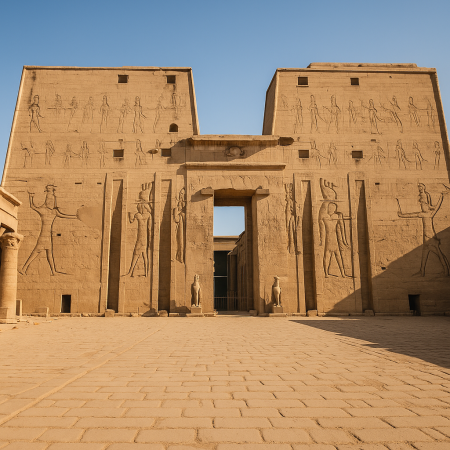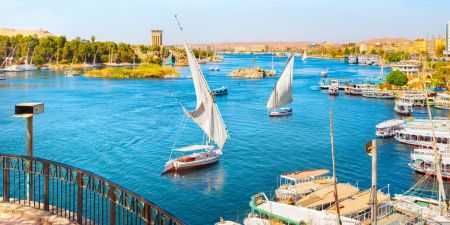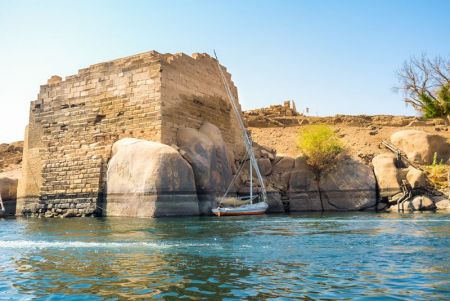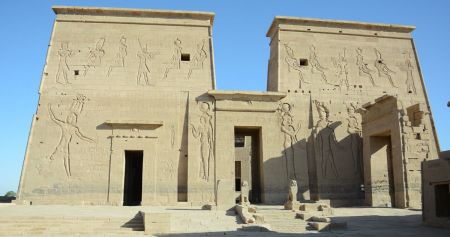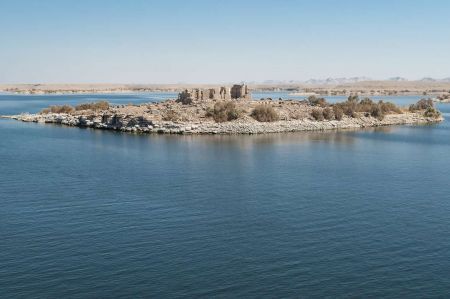Abu Simbel Temples
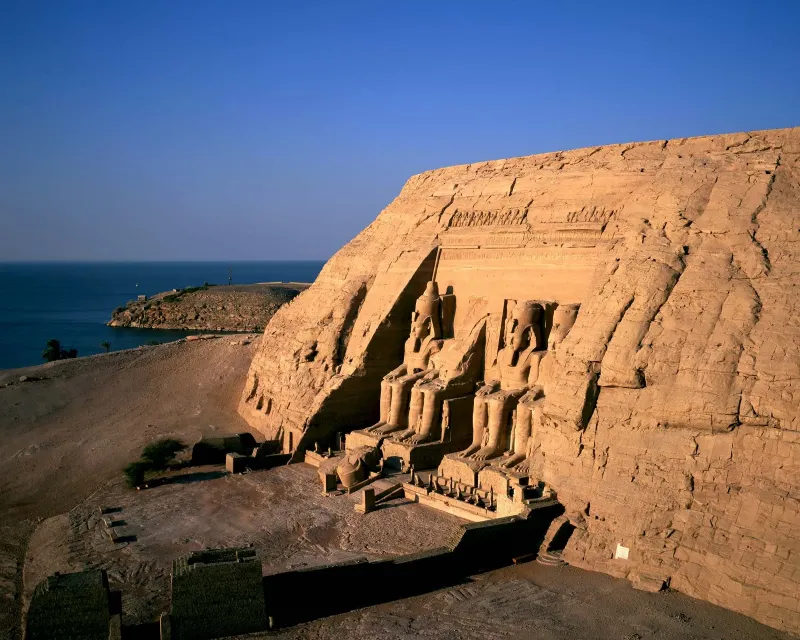
Standing stoically on the banks of Lake Nasser in southern Egypt, the Abu Simbel temples are a breathtaking testament to human ingenuity, divine kingship, and ancient Egyptian architecture. Carved directly into a sandstone cliff over 3,000 years ago, these monumental temples were built by Pharaoh Ramses II to immortalize his reign and honor the gods. Yet Abu Simbel isn't just a symbol of power; it’s a layered narrative carved in stone—one that tells of love, legacy, conquest, and cosmic alignment.
The Great Temple of Ramses II and the Small Temple of Nefertari aren't just awe-inspiring because of their sheer scale, but because of the precision, artistry, and spiritual symbolism woven into every detail. Each colossal statue, every hieroglyph, and every sunlit corridor pulses with intention. But beyond their ancient allure, these temples also represent a modern marvel—having been dismantled and relocated in the 1960s to avoid submersion during the construction of the Aswan High Dam. This act of preservation, orchestrated by UNESCO, not only saved these temples from a watery grave but made Abu Simbel an international icon of heritage preservation.
For travelers, historians, and spiritual seekers alike, visiting Abu Simbel is more than just ticking a box—it's stepping into the eternal heartbeat of Ancient Egypt. With the rising sun illuminating the inner sanctum twice a year in a cosmic spectacle that continues to amaze, the temples of Abu Simbel remain one of the most dramatic and symbolic experiences on Earth.
History of the Abu Simbel Temples
Commissioned by Ramses II: Politics Meets Divinity
Built around 1244 BCE, the Abu Simbel Temples were part of Ramses II’s grand strategy to assert his divine right to rule and to cement his legacy as the greatest pharaoh of Egypt’s New Kingdom. The temples were deliberately positioned on Egypt’s southern border to impress upon Nubians and potential invaders the strength and sacredness of the Egyptian empire.
The Great Temple is dedicated to Ramses himself, but also to the gods Amun, Ra-Horakhty, and Ptah. The Small Temple, just a few meters away, honors his favorite wife, Queen Nefertari, and the goddess Hathor. This duality of power—earthly and divine, masculine and feminine—was crucial to the Egyptian worldview and was visually and spiritually encoded into the very stones of Abu Simbel.
Relocation and the Rescue by UNESCO
In 1968, the temples faced destruction due to the rising waters caused by the construction of Lake Nasser. In a groundbreaking global effort, the temples were cut into massive blocks, moved 65 meters higher and 200 meters back, and reassembled with pinpoint accuracy. This relocation project, led by UNESCO, was not only a feat of modern engineering but also a powerful symbol of cultural solidarity. Today, Abu Simbel stands both as a relic of ancient might and a beacon of modern cooperation.
Explore history and beauty with the Best Nile River Cruises
Architectural Brilliance of Abu Simbel
The Great Temple: A Vision in Sandstone
Towering over 30 meters high, the facade of the Great Temple features four colossal statues of Ramses II, each standing 20 meters tall. These statues guard the entrance like deified sentinels, gazing eternally across the Nubian desert. Inside, the hypostyle hall is lined with Osiride pillars—carved representations of the pharaoh as the god Osiris—symbolizing his eternal reign.
Intricate reliefs depict Ramses in battle, especially at Kadesh, reinforcing his prowess as a warrior-king. Yet it’s the sanctuary at the temple’s heart that delivers the greatest impact. Aligned with the solar calendar, the rising sun illuminates three of four statues seated within—Ramses, Ra-Horakhty, and Amun—twice a year, on February 22 and October 22. Only Ptah, the god of the underworld, remains cloaked in darkness.
The Temple of Nefertari: Equality in Stone
Unprecedented in Egyptian architecture, the Temple of Nefertari places the queen on equal footing with the pharaoh. The facade features six statues—four of Ramses and two of Nefertari—all standing at about 10 meters. Inside, scenes of the queen playing the sistrum and worshipping Hathor dominate the wall carvings, portraying her as both divine consort and independent deity figure.
Sun Festival Phenomenon: A Celestial Performance
The Abu Simbel Sun Festival, observed twice annually, draws thousands of visitors who witness the solar alignment inside the Great Temple. At dawn, the inner sanctuary lights up, a phenomenon that aligns precisely with Ramses' coronation and birthday. It’s a ritual rooted in ancient cosmology and a living tradition that continues to captivate modern audiences.
Cultural and Religious Significance
Divine Propaganda: Ramses as a Living God
More than just a tomb or temple, Abu Simbel functioned as political propaganda in stone. Ramses wasn’t just presenting himself as a king—he was depicting himself as a living god, standing shoulder to shoulder with Egypt’s highest deities. This fusion of king and god was essential for asserting divine legitimacy, especially in Egypt’s southern territories where political influence was contested.
Symbol of Eternal Love: Ramses and Nefertari
The smaller temple exudes warmth and intimacy, celebrating the deep affection Ramses II had for his queen, Nefertari. The rare inclusion of a royal woman in such a prominent religious structure reflects a unique reverence and reinforces the symbolic unity of king and consort, masculine and feminine energies.
Visiting Abu Simbel Today
Getting There: From Aswan to the Sands
Most visitors reach Abu Simbel by taking a short flight or long scenic drive from Aswan. Organized day trips depart early, ensuring tourists can explore the temples in cooler morning hours. There’s also the option of combining the visit with a Lake Nasser cruise—a tranquil and luxurious way to approach this monumental site.
What to Expect at the Site
Expect to be awe-struck. The stark desert backdrop, the towering statues, and the silence broken only by the wind create a surreal experience. There’s a visitor center offering insight into the relocation project, and bilingual signage provides context for what you're seeing. However, nothing compares to standing beneath the gods themselves.
Best Time to Visit
October through April offers milder temperatures, ideal for temple exploration. For an unforgettable experience, plan your trip around the Sun Festival dates: February 22 or October 22.
Frequently Asked Questions About Abu Simbel
When was the Abu Simbel temple built?
Construction began around 1264 BCE during the reign of Pharaoh Ramses II and took approximately 20 years to complete.
Why was Abu Simbel relocated?
To save it from flooding caused by the creation of Lake Nasser during the construction of the Aswan High Dam.
Who are the deities worshipped at Abu Simbel?
The Great Temple honors Ramses II alongside Ra-Horakhty, Amun, and Ptah. The Small Temple is dedicated to Nefertari and the goddess Hathor.
What is the Sun Festival at Abu Simbel?
A biannual solar alignment where the sun illuminates the inner sanctuary of the Great Temple, symbolically activating the divine statues within.
How long should I spend at Abu Simbel?
Most tours allot 2–3 hours at the site, which is ample time to explore both temples and the surrounding areas.
Conclusion: Abu Simbel, the Pinnacle of Ancient Egyptian Wonder
From its awe-inspiring construction to its miraculous relocation, the Abu Simbel Temples remain a crown jewel of ancient Egyptian civilization. It’s not just the stone colossi or celestial light shows that make Abu Simbel unforgettable—it’s the legacy of timeless vision, spiritual devotion, and architectural mastery. Whether you're a traveler, a student of history, or a seeker of wonder, Abu Simbel offers more than just a destination—it offers a doorway into the soul of ancient Egypt.



